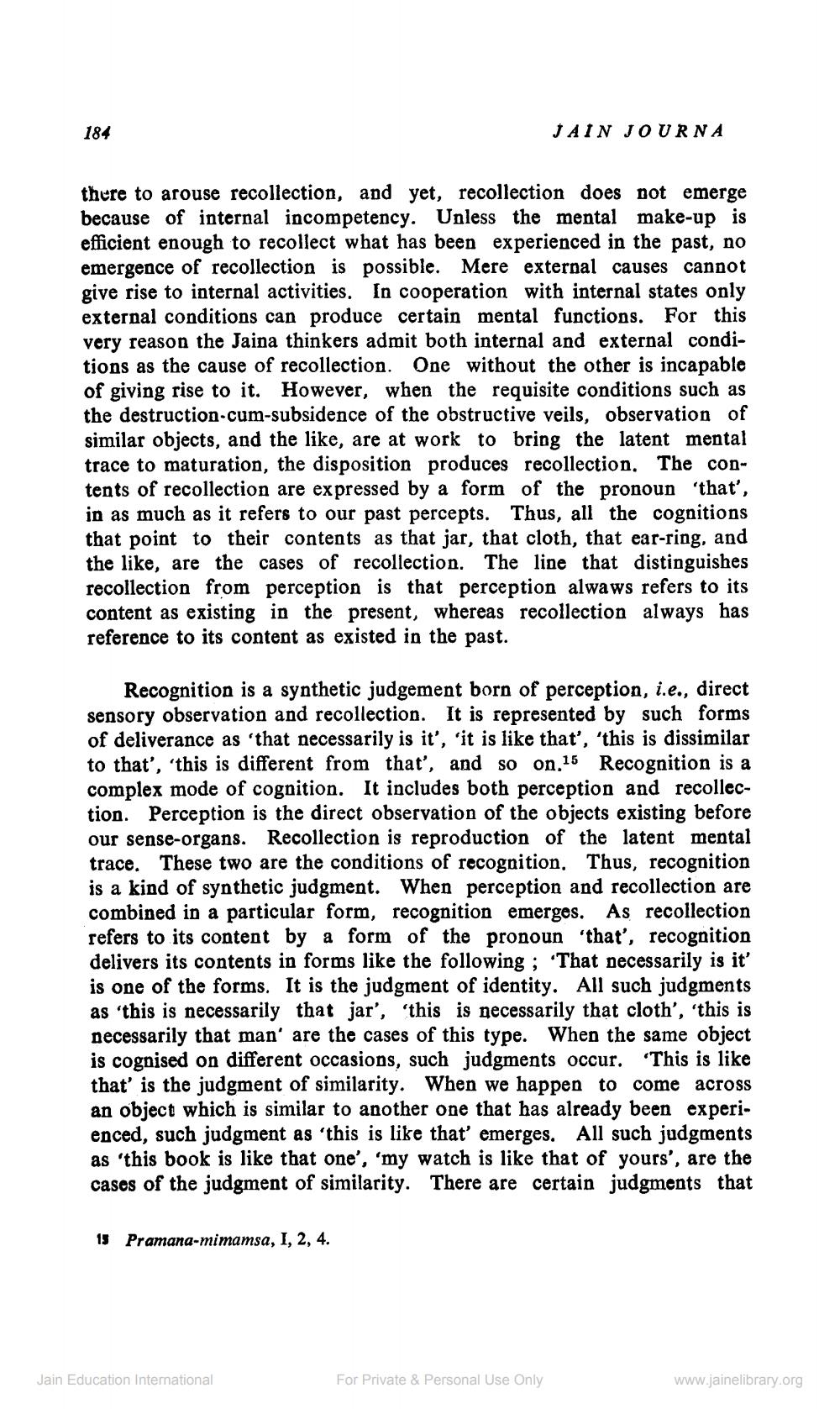________________
184
JAIN JOURNA
there to arouse recollection, and yet, recollection does not emerge because of internal incompetency. Unless the mental make-up is efficient enough to recollect what has been experienced in the past, no emergence of recollection is possible. Mere external causes cannot give rise to internal activities. In cooperation with internal states only external conditions can produce certain mental functions. For this very reason the Jaina thinkers admit both internal and external conditions as the cause of recollection. One without the other is incapable of giving rise to it. However, when the requisite conditions such as the destruction-cum-subsidence of the obstructive veils, observation of similar objects, and the like, are at work to bring the latent mental trace to maturation, the disposition produces recollection. The contents of recollection are expressed by a form of the pronoun 'that', in as much as it refers to our past percepts. Thus, all the cognitions that point to their contents as that jar, that cloth, that ear-ring, and the like, are the cases of recollection. The line that distinguishes recollection from perception is that perception alwaws refers to its content as existing in the present, whereas recollection always has reference to its content as existed in the past.
Recognition is a synthetic judgement born of perception, i.e., direct sensory observation and recollection. It is represented by such forms of deliverance as 'that necessarily is it', 'it is like that', 'this is dissimilar to that', 'this is different from that', and so on.15 Recognition is a complex mode of cognition. It includes both perception and recollection. Perception is the direct observation of the objects existing before our sense-organs. Recollection is reproduction of the latent mental trace. These two are the conditions of recognition. Thus, recognition is a kind of synthetic judgment. When perception and recollection are combined in a particular form, recognition emerges. As recollection refers to its content by a form of the pronoun 'that', recognition delivers its contents in forms like the following ; That necessarily is it' is one of the forms. It is the judgment of identity. All such judgments as 'this is necessarily that jar', this is necessarily that cloth', 'this is necessarily that man' are the cases of this type. When the same object is cognised on different occasions, such judgments occur. This is like that' is the judgment of similarity. When we happen to come across an object which is similar to another one that has already been experienced, such judgment as 'this is like that emerges. All such judgments as 'this book is like that one', 'my watch is like that of yours', are the cases of the judgment of similarity. There are certain judgments that
15 Pramana-mimamsa, 1, 2, 4.
Jain Education International
For Private & Personal Use Only
www.jainelibrary.org




